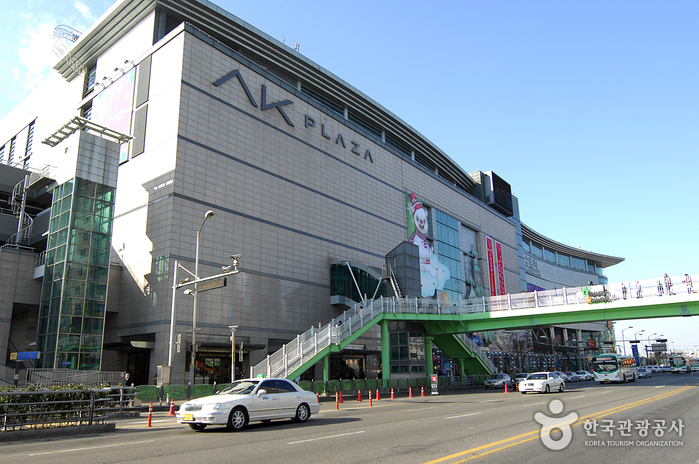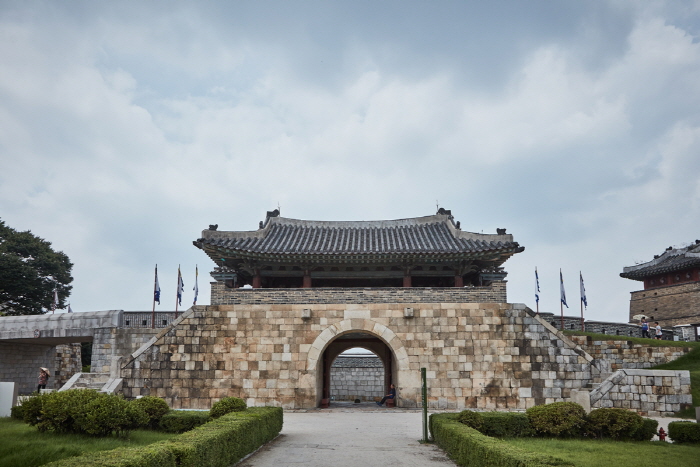Guess - Suwon Station AK Branch [Tax Refund Shop] (게스 수원역Ak)
3.0Km 2024-04-19
924, Deogyeong-daero, Paldal-gu, Suwon-si, Gyeonggi-do
-
Suwon Hwaseong Cultural Festival (수원화성문화제)
3.0Km 2025-07-09
825 Jeongjo-ro, Paldal-gu, Suwon-si, Gyeonggi-do
+82-31-228-3920
Hwaseong Fortress, a UNESCO World Heritage Site, hosts the Suwon Hwaseong Cultural Festival every autumn. The festival’s main event is the “King Jeongjo’s Royal Parade,” a reenactment of King Jeongjo’s procession to pay respects to his father Crown Prince Sado’s tomb. This spectacular event features over 4,000 participants in traditional Joseon-era costumes marching along a 59km route. The “King Jeongjo’s Dasobangwa” program, offering a taste of royal court cuisine served for the Banquet of Lady Hyegyeong-Gung Hong, is especially popular among international tourists. Additionally, the festival includes fortress-building experiences, night tours, and various reenactment events and performances, all linked to Hwaseong Fortress, Suwon.
◎Hwaseong Fortress, Suwon
This planned city was built by King Jeongjo during the Joseon Dynasty. It is considered a pinnacle of Korean fortress culture, incorporating the advanced technologies of its time.
AK Plaza Department Store - AK TOWN Branch (Suwon Branch) (AK플라자백화점 AK TOWN점(수원점))
3.0Km 2016-12-09
924, Deogyeong-daero, Paldal-gu, Suwon-si, Gyeonggi-do
+82-1661-1114
AK Plaza Department Store - AK TOWN Branch is a multi-entertainment shopping center featuring a CGV (movie theater), a Books Libro, and a Characters’ Fun Zone.
With the best shopping experience combined with high-quality leisure activities, AK Plaza has now become one of the most iconic spaces for leading shopping trends in Korea.
Suwon Hwaseong Fortress [UNESCO World Heritage] (수원 화성 [유네스코 세계유산])
3.0Km 2024-10-24
Yeonghwa-dong, Jangan-gu, Suwon-si, Gyeonggi-do
+82-31-290-3600
Suwon was one of four main regional government centers during the Joseon dynasty. Hwaseong Fortress, built to protect the city, was designated as a UNESCO World Cultural Heritage Site on December 12, 1997 for its historical value. The fortress offers various performances daily as well as the Suwon Hwaseong Cultural Festival every fall. The walls stretch for 5,700 kilometers, with Paldalsan Mountain at the center. The fortress, constructed from 1794 to 1796, was built as a display of King Jeongjo’s filial piety towards his father and to build a new pioneer city with its own economic power.
Hwaseomun Gate (화서문)
3.1Km 2022-12-29
334, Jangan-dong, Paldal-gu, Suwon-si, Gyeonggi-do
+82-31-290-3600
Hwaseomun Gate is the western gate of Hwaseong Fortress, a Treasure. Over the stone mujigae (rainbow) door is a single-story tower gate. Hwaseomun Gate's ongseong (defensive gate) forms a crecent shape, with one side of the ongseong remaining open.
Janganmun Gate (장안문)
3.1Km 2019-12-31
910, Jeongjo-ro, Paldal-gu, Suwon-si, Gyeonggi-do
+82-031-228-4416
Janganmun Gate is the main gate of Hwaseong Fortress at the northern wall. Jangan means capital, implying that Hwaseong Fortress is the secondary capital. Janganmun Gate served as the main gate because the king would pass from this gate when arriving from Hanyang, the capital city, now modern-day Seoul. It is interesting to note that this gate is larger than Sungryemun Gate in Seoul.
Olive Young - Suwon L’FORT MALL Branch [Tax Refund Shop] (올리브영 수원엘포트몰)
3.1Km 2024-04-19
Store #49-52, 1F, 145, Gwanggyojungang-ro, Yeongtong-gu, Suwon-si, Gyeonggi-do
-
Hottracks - Gwanggyo Branch [Tax Refund Shop] (핫트랙스 광교점)
3.1Km 2024-04-19
B1, 145, Gwanggyojungang-ro, Yeongtong-gu, Suwon-si, Gyeonggi-do
-
Lotte Mart - Gwanggyo Branch [Tax Refund Shop] (롯데마트 광교점)
3.1Km 2024-04-22
85, Central town-ro, Yeongtong-gu, Suwon-si, Gyeonggi-do
-
Gwanggyo Freiburg Observatory (광교 프라이부르크전망대)
3.2Km 2025-05-21
127 Gwanggyohosu-ro, Yeongtong-gu, Suwon-si, Gyeonggi-do
The Freiburg Observatory in Gwanggyo Lake Park is inspired by the observatory in Freiburg, an eco-city in Germany, and represents Suwon’s commitment to becoming an eco-conscious city. The observatory offers a stunning view of the lakes nearby.


![Suwon Hwaseong Fortress [UNESCO World Heritage] (수원 화성 [유네스코 세계유산])](http://tong.visitkorea.or.kr/cms/resource/36/2613036_image2_1.jpg)

![Olive Young - Suwon L’FORT MALL Branch [Tax Refund Shop] (올리브영 수원엘포트몰)](http://tong.visitkorea.or.kr/cms/resource/04/2889204_image2_1.jpg)
![Hottracks - Gwanggyo Branch [Tax Refund Shop] (핫트랙스 광교점)](http://tong.visitkorea.or.kr/cms/resource/45/2890545_image2_1.jpg)
![Lotte Mart - Gwanggyo Branch [Tax Refund Shop] (롯데마트 광교점)](http://tong.visitkorea.or.kr/cms/resource/68/2882068_image2_1.jpg)
 English
English
 한국어
한국어 日本語
日本語 中文(简体)
中文(简体) Deutsch
Deutsch Français
Français Español
Español Русский
Русский